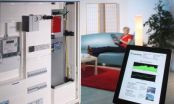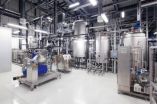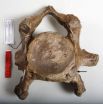(Press-News.org) LA JOLLA, Calif., March 25, 2014 – Sanford-Burnham Medical Research Institute (Sanford-Burnham) and UC San Diego School of Medicine scientists have shown that by encapsulating immature pancreatic cells derived from human embryonic stem cells (hESC), and implanting them under the skin in animal models of diabetes, sufficient insulin is produced to maintain glucose levels without unwanted potential trade-offs of the technology. The research suggests that encapsulated hESC-derived insulin-producing cells hold great promise as an effective and safe cell-replacement therapy for insulin-dependent diabetes.
"Our study critically evaluates some of the potential pitfalls of using stem cells to treat insulin-dependent diabetes," said Pamela Itkin-Ansari, Ph.D., adjunct assistant professor in the Development, Aging, and Regenerative Program at Sanford-Burnham, with a joint appointment at UC San Diego.
"We have shown that encapsulated hESC-derived pancreatic cells are able to produce insulin in response to elevated glucose without an increase in the mass or their escape from the capsule. These results are important because it means that the encapsulated cells are both fully functional and retrievable," said Itkin-Ansari.
In the study, published online in Stem Cell Research, Itkin-Ansari and her team used bioluminescent imaging to see if encapsulated cells stay in the capsule after implantation.
Previous attempts to replace insulin-producing cells, called beta cells, have met with significant challenges. For example, researchers have tried treating diabetics with mature beta cells, but because mature cells are fragile and scarce, the method is fraught with problems. Moreover, since the cells come from organ donors, they may be recognized as foreign by the recipient's immune system—requiring patients to take immunosuppressive drugs to prevent their immune system from attacking the donor's cells, ultimately leaving patients vulnerable to infections, tumors, and other adverse events.
Encapsulation technology was developed to protect donor cells from exposure to the immune system—and has proven extremely successful in preclinical studies.
Itkin-Ansari and her research team previously made an important contribution to the encapsulation approach by showing that pancreatic islet progenitor cells are an optimal cell type for encapsulation. They found that progenitor cells were more robust than mature beta cells to encapsulate, and while encapsulated, they matured into insulin-producing cells, which secreted insulin only when needed.
"We were thrilled to see that the cells remained fully encapsulated for up to 150 days, the longest period tested, said Itkin-Ansari. "Equally important is that we show that the progenitor cells develop glucose responsiveness without a significant change in mass—meaning they don't outgrow their capsule.
"Next steps for the development of the approach will be to figure out the size of the capsule required to house the number of progenitor beta cells needed to respond to glucose in humans. And of course we want to learn how long a capsule will function once implanted. Given these goals and continued successful results, I expect to see the technology become a treatment option for patients with insulin-dependent diabetes," said Itkin-Ansari.
INFORMATION:
This research was funded in part by CIRM and the The Hartwell Foundation.
The study was co-authored by Kaitlyn Kirk, Ergeng Hao, Reyhaney Lahmy, Sanford-Burnham Medical Research Institute and UC San Diego.
About Sanford-Burnham Medical Research Institute
Sanford-Burnham Medical Research Institute is dedicated to discovering the fundamental molecular causes of disease and devising the innovative therapies of tomorrow. Sanford-Burnham takes a collaborative approach to medical research with major programs in cancer, neurodegeneration and stem cells, diabetes, and infectious, inflammatory, and childhood diseases. The Institute is recognized for its National Cancer Institute-designated Cancer Center and expertise in drug discovery technologies. Sanford-Burnham is a nonprofit, independent institute that employs 1,200 scientists and staff in San Diego (La Jolla), Calif., and Orlando (Lake Nona), Fla. For more information, visit us at sanfordburnham.org.
Replacing insulin through stem cell-derived pancreatic cells under the skin
A newly created method of placing stem cell-derived pancreatic cells in capsules under the skin to replace insulin is tested in diabetic disease models
2014-03-25
ELSE PRESS RELEASES FROM THIS DATE:
Complex brain functional network connection after stroke
2014-03-25
Studies have shown that functional network connection models can be used to study brain network changes in patients with schizophrenia. A research team from Huazhong University of Science and Technology in China inferred that these models could also be used to explore functional network connectivity changes in stroke patients. The researchers used independent component analysis to find the motor areas of stroke patients, which is a novel way to determine these areas. Functional magnetic resonance imaging datasets were collected from healthy controls and right-handed stroke ...
Technofossils -- an unprecedented legacy left behind by humans
2014-03-25
A new study by an international team of scientists, including Dr Jan Zalasiewicz and Professor Mark Williams of the University of Leicester's Department of Geology, suggests that the fossil impact humans have made on the planet is vast and unprecedented in nature – and that there's been nothing remotely like it since the Earth formed, over four and half billion years ago.
The study, entitled 'The technofossil record of humans' and published by SAGE in The Anthropocene Review, argues that, like dinosaurs, who left their bones and footprints behind for future generations ...
Managing renewables intelligently
2014-03-25
"Wind, solar and biogas are all energy sources with their own strengths and weaknesses. And it's by combining the strengths of each in a smart way that we'll be able to guarantee Germany's energy supply into the future," says Dr. Kurt Rohrig, deputy director of the Fraunhofer Institute for Wind Energy and Energy System Technology IWES in Kassel. But what happens when, instead of a big power plant, you have a host of individual small energy producers feeding in energy to the grid at varying times? Is reliable operation of the grid still technically feasible? In the "Combined ...
Sugar, not oil
2014-03-25
Plastic, gasoline, rubber – very many items we use every day are based on oil. But this raw material is becoming increasingly scarcer. Step by step researchers are therefore investigating possibilities for using renewable raw materials to replace oil. One well-known example of this is biodiesel, which comes not from oil sources, but from fields of yellow-flowering rape. In future it is planned to produce another substance from plants, namely isobutene, a basic chemical used in the chemical industry to produce fuels, solvents, elastomers or even antiknock agents in fuel. ...
Plasma tool for destroying cancer cells
2014-03-25
Plasma medicine is a new and rapidly developing area of medical technology. Specifically, understanding the interaction of so-called atmospheric pressure plasma jets with biological tissues could help to use them in medical practice. Under the supervision of Sylwia Ptasinska from the University of Notre Dame, in Indiana, USA, Xu Han and colleagues conducted a quantitative and qualitative study of the different types of DNA damage induced by atmospheric pressure plasma exposure, the paper is published in EPJ D as part of a special issue on nanoscale insights into Ion Beam ...
Neck ribs in woolly mammoths provide clues about their decline and eventual extinction
2014-03-25
Researchers recently noticed that the remains of woolly mammoths from the North Sea often possess a 'cervical' (neck) rib—in fact, 10 times more frequently than in modern elephants (33.3% versus 3.3%). In modern animals, these cervical ribs are often associated with inbreeding and adverse environmental conditions during pregnancy. If the same factors were behind the anomalies in mammoths, this reproductive stress could have further pushed declining mammoth populations towards ultimate extinction.
Mammals, even the long-necked giraffes and the short-necked dolphins, almost ...
Famous paintings help study the Earth's past atmosphere
2014-03-25
A team of Greek and German researchers has shown that the colours of sunsets painted by famous artists can be used to estimate pollution levels in the Earth's past atmosphere. In particular, the paintings reveal that ash and gas released during major volcanic eruptions scatter the different colours of sunlight, making sunsets appear more red. The results are published today in Atmospheric Chemistry and Physics, an open access journal of the European Geosciences Union (EGU).
When the Tambora volcano in Indonesia erupted in 1815, painters in Europe could see the colours ...
Risk of alcohol-related cancer lowers the intention for binge drinking in college students
2014-03-25
Washington, DC (March 21, 2014) – Binge drinking for college students has proven to be a huge problem at many universities. The risk of DUI or even death makes it a public health concern that students and administrators need to face. A recent study by researchers at the University at Buffalo, State University of New York, found that college students exposed to the risk messages of alcohol-related cancer had lower intent to engage in binge drinking.
Cindy Yixin Chen and Z. Janet Yang of the University at Buffalo, State University of New York will present their study at ...
Dialing is the most distracting activity for drivers young and old alike
2014-03-25
Dialing is the most distracting activity for drivers young and old alike
Article provided by Fahrendorf, Viloria, Oliphant & Oster L.L.P.
Visit us at http://www.renonvlaw.com
In recent years, there have been numerous studies about the dangers of using cellphones while driving. In many of them, the research has assumed that the most distracting aspect of using a cellphone is talking. However, a new study has found that this is not the case.
The study, recently published in the New England Journal of Medicine, focused on a sample of 42 young drivers that had ...
Product liability: defending against claims of unsafe goods
2014-03-25
Product liability: defending against claims of unsafe goods
Article provided by Adler, Cohen, Harvey, Wakeman and Guekguezian, L.L.P.
Visit us at http://www.adlercohen.com
In our modern lives we are all dependent on manufactured products and rely on responsible, reputable manufacturers to keep those goods safe for our use. Because some companies have not historically lived up to their duties to keep the public safe from dangerous or defective products, laws and government agencies play a big role in setting safety standards, managing recalls and allowing individuals ...
LAST 30 PRESS RELEASES:
Child survivors of critical illness are missing out on timely follow up care
Risk-based vs annual breast cancer screening / the WISDOM randomized clinical trial
University of Toronto launches Electric Vehicle Innovation Ontario to accelerate advanced EV technologies and build Canada’s innovation advantage
Early relapse predicts poor outcomes in aggressive blood cancer
American College of Lifestyle Medicine applauds two CMS models aligned with lifestyle medicine practice and reimbursement
Clinical trial finds cannabis use not a barrier to quitting nicotine vaping
Supplemental nutrition assistance program policies and food insecurity
Switching immune cells to “night mode” could limit damage after a heart attack, study suggests
URI-based Global RIghts Project report spotlights continued troubling trends in worldwide inhumane treatment
Neutrophils are less aggressive at night, explaining why nighttime heart attacks cause less damage than daytime events
Menopausal hormone therapy may not pose breast cancer risk for women with BRCA mutations
Mobile health tool may improve quality of life for adolescent and young adult breast cancer survivors
Acupuncture may help improve perceived breast cancer-related cognitive difficulties over usual care
Nerve block may reduce opioid use in infants undergoing cleft palate surgery
CRISPR primes goldenberry for fruit bowl fame
Mass General Brigham announces new AI company to accelerate clinical trial screening and patient recruitment
Fat tissue around the heart may contribute to greater heart injury after a heart attack
Jeonbuk National University researcher proposes a proposing a two-stage decision-making framework of lithium governance in Latin America
Chromatin accessibility maps reveal how stem cells drive myelodysplastic progression
Cartilaginous cells regulate growth and blood vessel formation in bones
Plant hormone allows lifelong control of proteins in living animal for first time
Swedish freshwater bacteria give new insights into bacterial evolution
Global measures consistently underestimate food insecurity; one in five who suffer from hunger may go uncounted
Hidden patterns of isolation and segregation found in all American cities
FDA drug trials exclude a widening slice of Americans
Sea reptile’s tooth shows that mosasaurs could live in freshwater
Pure bred: New stem cell medium only has canine components
Largest study of its kind highlights benefits – and risks – of plant-based diets in children
Synergistic effects of single-crystal HfB2 nanorods: Simultaneous enhancement of mechanical properties and ablation resistance
Mysterious X-ray variability of the strongly magnetized neutron star NGC 7793 P13
[Press-News.org] Replacing insulin through stem cell-derived pancreatic cells under the skinA newly created method of placing stem cell-derived pancreatic cells in capsules under the skin to replace insulin is tested in diabetic disease models



